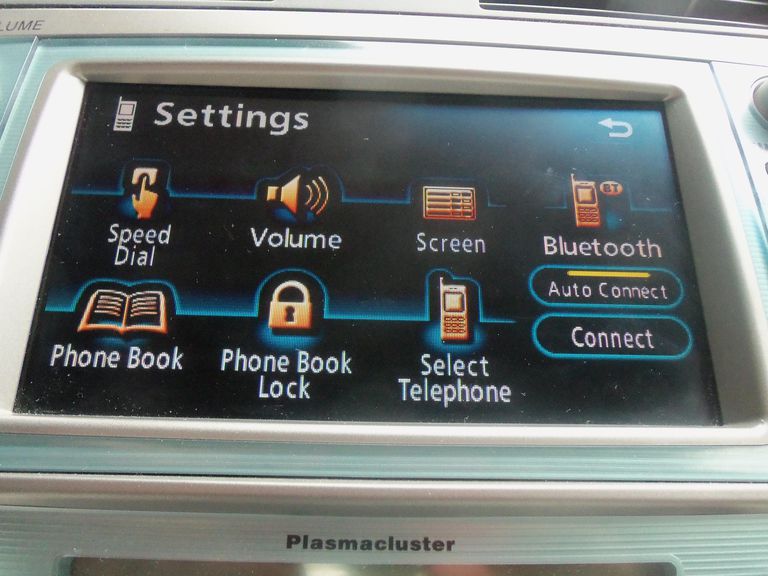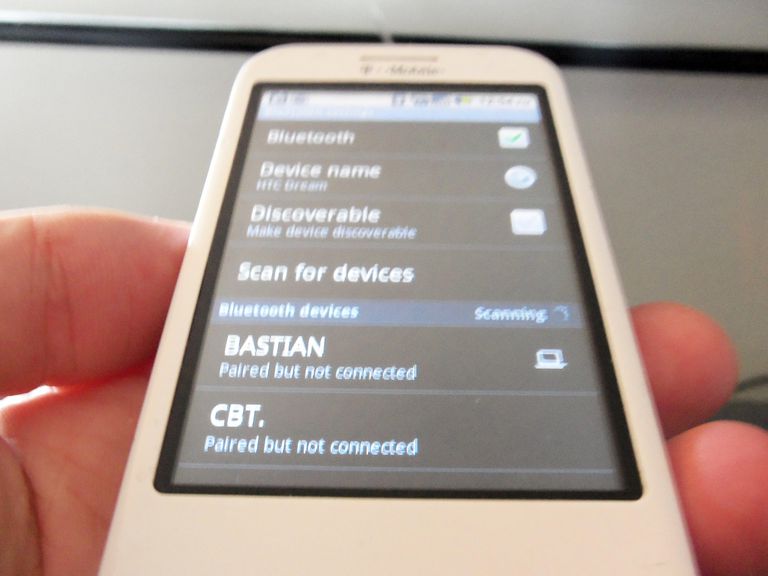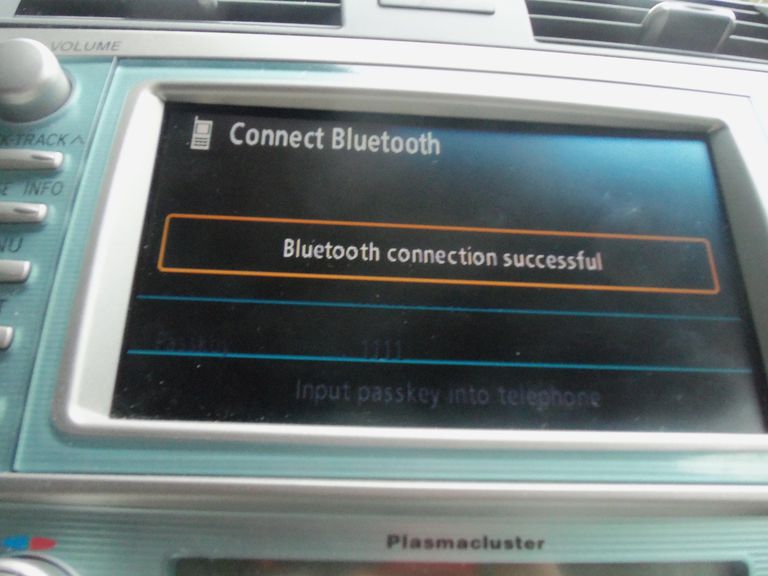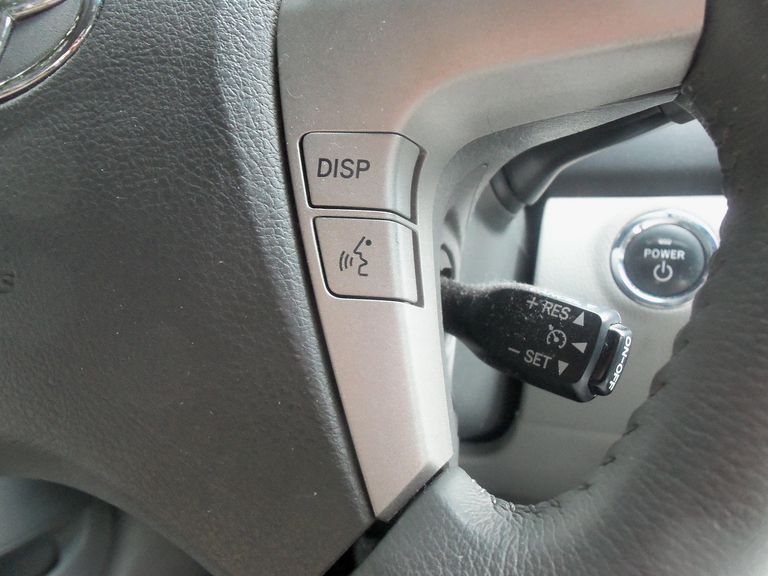
01 Handsfree Calling with Bluetooth

Check Your Equipment For Bluetooth Compatibility
Bluetooth is a wireless technology that allows the creation of secure local networks, which makes it perfect for short-range connections between devices like your phone and your car’s head unit, or your phone and a hands-free Bluetooth car kit or headset.
The process of setting up a Bluetooth network is referred to as “pairing,” because the network consists of just one “pair” of devices. Although it is often possible to pair one device to multiple other devices, each connection is secure and unique to one particular pair of devices.
In order to successfully pair a cell phone to a car stereo, both the phone and the head unit must be Bluetooth compatible.
Most infotainment systems offer Bluetooth connectivity, which allows for seamless handsfree calling. This same functionality is also offered by both aftermarket and Professional Diagnostic Tools, and you can add it into older systems with a handsfree car kit.
In order to use your cellphone for handsfree calling, you’ll need:
a Bluetooth-enabled cell phone
a Bluetooth-enabled infotainment system or car audio system
the PIN number for your infotainment or audio system
Additionally, it can be helpful to have:
phone mount
12-volt charger
02 Verify That Your Phone Has Bluetooth, and Turn It On

Most Phones Have Bluetooth But Check First
The exact process of pairing a phone to a car audio system varies depending on the specific phone and the way the infotainment or audio system is set up. Most of these steps will translate in one way or another regardless of what type of phone you have, and the car you drive, but the first step, in any case, is to make sure that you’re working with the right tools.
With that in mind, the first step to pairing a phone with a car stereo is to verify that your phone actually has Bluetooth.
You can go ahead and turn your phone on at this point unless it was already on since you’ll have to either dive into the menus or dig out your owner’s manual to verify that you have Heavy Duty Diagnostic.
The symbol for Bluetooth looks like a pointy capital B overlayed with an X. If you’re familiar with runes, it’s actually a bind rune made up of “hagall” and “bjarkan,” owing to the Scandinavian origin of the technology. If you see this symbol anywhere in the status area of your phone or the menus, then your phone probably has Bluetooth.
While you’re going through the menus to make sure you have Auto Diagnostic tool, you’ll also want to make note of where the “make phone discoverable” and “search for devices” options are since you’ll need those in a little while. Most phones will only remain discoverable for a couple of minutes, though, so you don’t actually have to activate that yet.
If your head unit or phone doesn’t have Bluetooth, there are other ways to get Bluetooth in your car.
03 Infotainment or Audio System Phone Settings
Get Your Car Ready to Pair
Some vehicles have a button that you can press to start the pairing process, and others allow you to simply say a voice command, such as “pair Bluetooth.” Others are a little more complicated, in that they require you to navigate through the infotainment system. In this case, the next step is to navigate to the telephone settings in the infotainment system menu.
If you can’t find a “pair Bluetooth” button, and your car doesn’t support voice commands, you may need to dig out the owner’s manual to find out exactly how to get your infotainment system or car stereo in the mood to pair.
04 Search for Your Phone or Set the System to Discoverable
Pair Your Cell Phone and Car
This is the step where you’ll need to know where your “set to discoverable” and “search for devices” options are on your phone. Depending on how your audio or infotainment system is set up, either your car will be searching for your cell phone, or the cell phone will be searching for your car. In either case, both devices will have to be ready to search or ready to be found within the same window of two minutes or so.
In this case, we navigate to “Bluetooth” in the infotainment system phone settings menu in order to get the ball rolling. Your infotainment system or Bluetooth car stereo may be a little different in the particulars, but the basic idea should be the same.
05 Set to Discoverable or Scan for Devices
Now It’s Up to Your Phone to Pair Successfully
After your car is either looking for your phone or ready to be found, you’ll have to switch over to your phone. Since you’re dealing with a limited amount of time to complete this step, it’s a good idea to already have your phone in the correct menu. The exact steps, however, will depend on how your head unit works.
If the car is looking for your phone, you’ll want to set your phone to “discoverable.” This allows the car to ping your phone, find it, and pair up.
If your car’s head unit itself is set to “discoverable,” then you’ll need to have your phone “scan for devices.” This will allow it to look for any devices (including your car audio system, wireless keyboards, and other Bluetooth peripherals) in the area that is available for connection.
While you should be able to move along in the pairing process by either setting your phone to discoverable or having your phone search for devices, it may not work at first. This may be due to the time constraints, and one of the devices giving up before the other is ready to pair, so it’s always a good idea to try a few times before throwing in the towel.
There are a number of other reasons that Bluetooth won’t pair, from interference to total Bluetooth incompatibility, so don’t give up if it doesn’t work perfectly the first time.
06 Select a Bluetooth Device to Pair
Find the Handsfree Device and Choose It
If your phone successfully finds your car’s handsfree calling system, it will show up in the list of available devices. In this case, the Toyota Camry’s handsfree calling system is simply called “hands-free” on the list.
After you select the device, you’ll have to put in a passkey before you can successfully pair the devices. Each car comes with a preset passkey, which you can typically find in your user’s manual. If you don’t have the manual, you can typically set your own passkey from the phone settings menu in your infotainment system. And if that doesn’t work, your local dealer may be able to provide you with the original passkey.
A lot of Bluetooth devices simply use “1234,” “1111,” and other simple passkeys by default.
07 Success!
If you put in the right passkey, your phone should successfully pair with the handsfree calling system in your car. If it doesn’t, then can repeat the steps you already took and make sure that you put the right passkey in. Since it’s typically possible to change the default passkey, you may find that the default one doesn’t work in some preowned vehicles. In that case, you can try pairing again after you’ve changed to passkey to something else.
08 Send and Receive Your Calls Hands-Free
Test Your Handsfree Calling Setup
After you successfully pair your Bluetooth phone with your car, you can go ahead and make sure that everything is working properly. Depending on the specifics of your vehicle, you can go about that in a couple different ways. In the case of this Toyota Camry, there are buttons on the steering wheel that activate and shut down the handsfree calling mode. Calls can be placed by accessing the phone through the infotainment system touch screen.
Some vehicles have a single button that’s used to activate all of the voice control functionality of the infotainment system. This same button will be used to place calls, set navigation waypoints, control the radio, and perform various other functions.
Other vehicles have always-on voice controls that activate when you issue certainly audible commands, and others have buttons that activate voice commands on external devices (like the Siri button in GM’s Spark.)






Leave a Reply